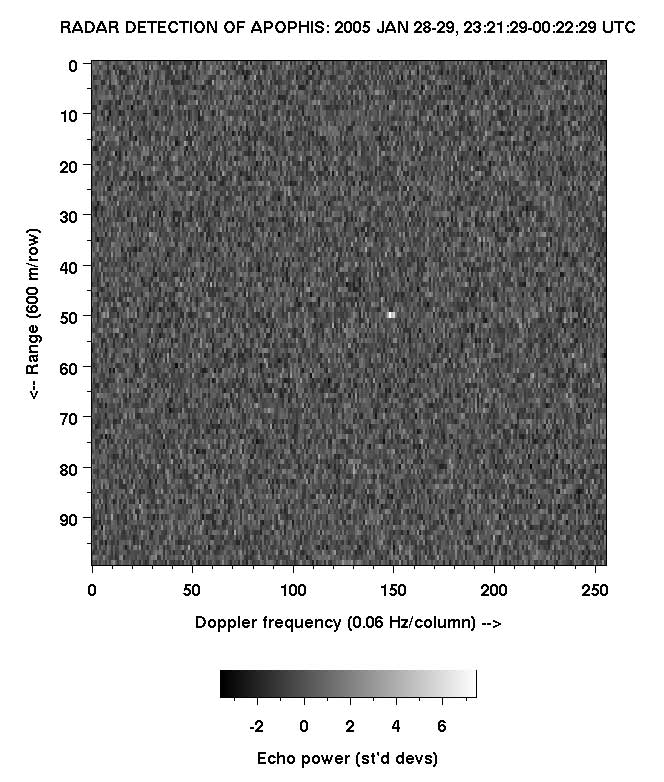[/caption]
NASA scientists have recalculated the path of the large asteroid Apophis, significantly downgrading the odds of it hitting Earth. Using new information, the refined path indicates a 1 in 250,000 chance of impact in 2036, reduced from the 1 in 45,000 odds calculated earlier. The asteroid is expected to make a record-setting — but harmless — close approach to Earth on Friday, April 13, 2029, when it comes no closer than 18,300 miles above Earth’s surface.
The new information provided a more accurate glimpse of 2036 Apophis’ orbit well into the latter part of this century. Among the findings is another close encounter by the asteroid with Earth in 2068 with chance of impact currently at approximately 1 in 333,000. As with earlier orbital estimates where Earth impacts in 2029 and 2036 could not initially be ruled out due to the need for additional data, it is expected that the 2068 encounter will diminish in probability as more information about 2029 Apophis is acquired.
Initially, Apophis was thought to have a 2.7 percent chance of impacting Earth in 2029. Additional observations of the asteriod ruled out any possibility of an impact in 2029.
The Apophis asteroid is approximately the size of two-and-a-half football fields.
“The refined orbital determination further reinforces that Apophis is an asteroid we can look to as an opportunity for exciting science and not something that should be feared,” said Don Yeomans, manager of the Near-Earth Object Program Office at JPL. “The public can follow along as we continue to study Apophis and other near-Earth objects by visiting us on our AsteroidWatch Web site and by following us on the @AsteroidWatch Twitter feed.”
The new data were documented by near-Earth object scientists Steve Chesley and Paul Chodas at NASA’s Jet Propulsion Laboratory. A majority of the data that enabled the updated orbit of Apophis came from observations made by Dave Tholen and collaborators at the University of Hawaii’s Institute for Astronomy in Manoa. Tholen pored over hundreds of previously unreleased images of the night sky made with the University of Hawaii’s 88-inch telescope, located near the summit of Mauna Kea.
Tholen made improved measurements of the asteroid’s position in the images, enabling him to provide Chesley and Chodas with new data sets more precise than previous measures for Apophis. Measurements from the Steward Observatory’s 90-inch Bok telescope on Kitt Peak in Arizona and the Arecibo Observatory on the island of Puerto Rico also were used in Chesley’s calculations.
“Apophis has been one of those celestial bodies that has captured the public’s interest since it was discovered in 2004,” said Chesley. “Updated computational techniques and newly available data indicate the probability of an Earth encounter on April 13, 2036, for Apophis has dropped from one-in-45,000 to about four-in-a million.”
The science of predicting asteroid orbits is based on a physical model of the solar system which includes the gravitational influence of the sun, moon, other planets and the three largest asteroids.
NASA detects and tracks asteroids and comets passing close to Earth using both ground and space-based telescopes. The Near Earth-Object Observations Program, commonly called “Spaceguard,” discovers these objects, characterizes a subset of them and plots their orbits to determine if any could be potentially hazardous to our planet.
Source: NASA


